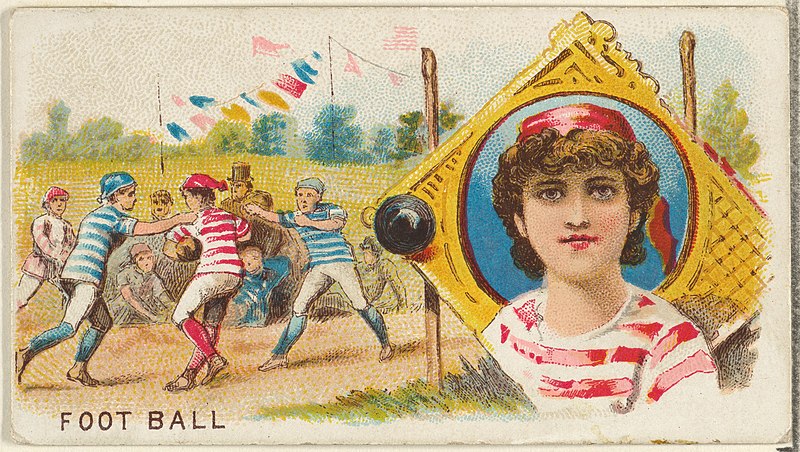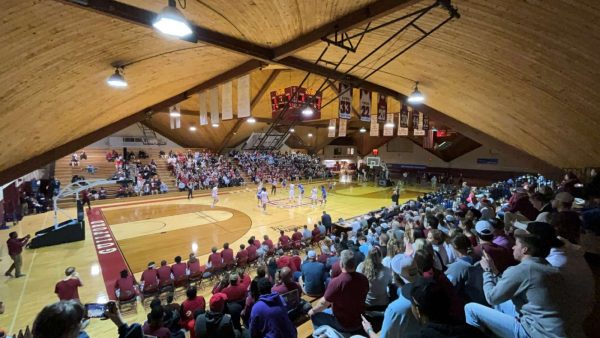A beginner’s guide to American football
Notorious for fatal injuries in its early years and aggressive nature, football continues to rake in billions for the American economy, according to Etonomics.
At first glance, it’s easy for those who are not familiar with the sport to get lost in the intricacies and complex nature of the plays and field. But American football has become both culturally and economically significant to Americans over the years.
Brad Davis, the current head coach of the Guilford College football team, attributes his success and even graduation from college to football.
“…Back in 2004, I told my mom and dad that if I’m not playing football in college, I’m not going to college,” Davis said. “But ultimately, football gave me a diploma; it gave me the education necessary to be successful.”
Davis provided the basics of the game. He explained that the football field is 120 yards long, and the purpose of the game is to get the ball into the opposing team’s end zone and keep them from getting the ball into yours.
Even people who don’t know the game tend to recognize the term “quarterback” from movies or the news. A quarterback’s job is to lead the offense, or the players trying to get the ball into the end zone.
“During the week, the quarterback needs to be in a meeting room, watching film, and they also need to be throwing a football,” said Davis. “Then, during the game, a quarterback really just needs to manage the game and protect the ball,” said Davis.
According to senior and sports management major Dominik Pocrnja, a play starts when the quarterback either throws the ball to the wide receiver or hands it off to the running back. Then, the wide receiver or running back runs it down the field. The play ends when the player is tackled, runs out of bounds, or drops the ball.
Offensive or defensive plays determine the teams’ courses of action—who’s going to go where and do what. The quarterback chooses, or calls, the offensive plays to maximize the likelihood that the players will get the ball down the field.
Trey Buie, a junior sports management major and the cornerback on the Guilford football team, has played football since fifth grade. As a cornerback, he is on defense, and his job is to help stop the other team from scoring.
Defense also includes linebackers and linemen. These positions try to keep the offense from scoring and are the ones who you see tackling the other team.
Football may get a bad rap due to its historically dangerous nature, but, according to students, there is more to the sport than meets the eye.
Buie grew up with football as a family tradition. His older cousin played in college and most of his male relatives played as well.
“It’s an American sport,” Buie said. “At the end of the day, it’s where people come together, have a good time, and watch their favorite teams. The tailgating, the booze, the atmosphere…you can be yourself and watch a fun sport.”
Although not a player himself, sports fan Dominik Pocrnja said that football and other sports have given him an outlet to express himself.
“You’ve got so much passion and people talk about sports for hours on end, and what I’ve seen is generally very respectful,” he said when describing the sports community.
The Guilford College football team has not seen a great record this season, but students seem to agree that the team itself has improved tremendously.
Pocrnja said that this improvement was due to new coaching staff, players’ development and the recruitment of new first-years: “In previous years they’ve lost games…by a margin of 20 or more points. Now they are losing by…five, six points or less and winning games they should be winning.”
Buie echoed this sentiment, saying, “I can truly say, even though the record does not show, this has probably been my favorite year so far. The sense of brotherhood, even though we’re not winning that much, it’s still fun and we’re still competing, and the games are closer than what they used to have been.”
Overall, football can be complex, but to students, the sport is more than just grown men tackling each other.
“It’s about the brotherhood, the friends you make, the people you meet, the journey and all,” Buie said. “It’s about having…good times and…bad times with them.”











